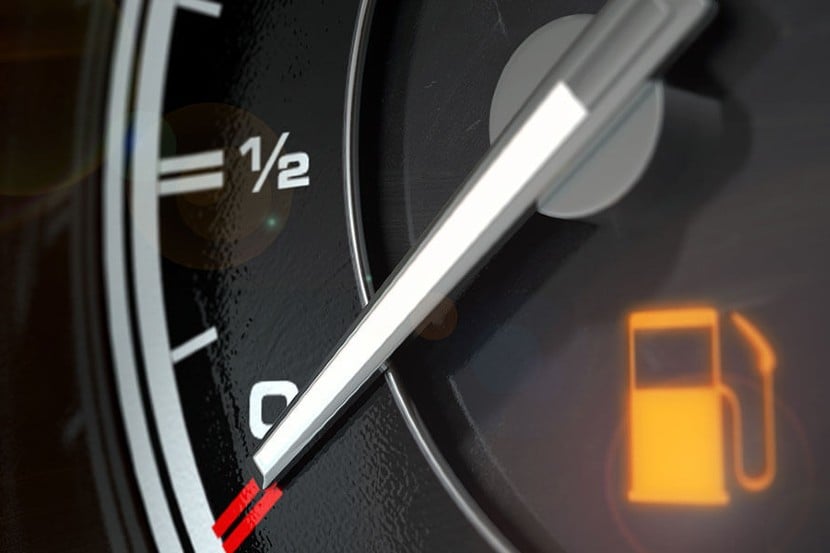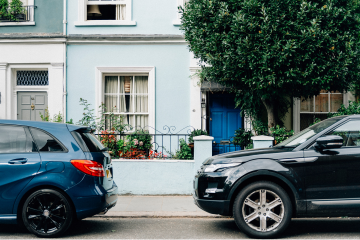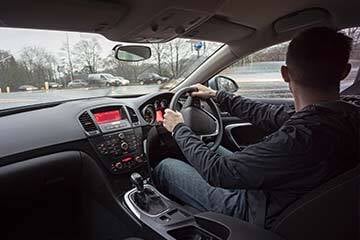Playing the game of ‘How far can I go before I have to fill up my tank?’ has left many motorists stranded at the side of the road after a breakdown. Whether you’re in a hurry or worried about rising petrol prices, lots of us hold off refilling our tanks until the last possible moment.

My fuel light has come on. What does it mean?
When the fuel light comes on it means you’re starting to run low on fuel and should refuel your car soon.
The ‘fuel low’ indicator is usually only triggered once your tank’s capacity is down to 10-15%, so you don’t need to panic - yet.
What does it mean when my fuel light starts flashing?
When the fuel light on your dashboard starts flashing it means you should refuel as soon as possible.
The flashing means you've probably now got less than 10% of your fuel capacity left, but you're not quite running on fumes yet.
Your car might have a digital display to give you an estimate of how many miles you have left. But even these aren’t fully accurate.
When my fuel light comes on, how much petrol is left?
How far you can actually drive once your fuel warning light comes on varies from car to car.
There's no standard amount that should be left in the tank before the dashboard fuel light comes on. So, you shouldn’t assume that you’ve got a set number of miles left when it first alerts you.
As a rough guide, here are some of the UK’s top cars, and how far each might go once the fuel light has come on:
| Car model* | Remaining mileage** |
|---|---|
|
Volkswagen Golf
|
61 miles
|
|
Audi A3
|
58 miles
|
|
Ford Focus
|
55 miles
|
|
Ford Fiesta
|
54 miles
|
|
Mercedes E Class
|
50 miles
|
|
Volkswagen Polo
|
50 miles
|
|
Audi A4
|
48 miles
|
|
Audi A5
|
47 miles
|
|
Land Rover Range Rover
|
47 miles
|
|
Mercedes C Class
|
33 miles
|
*Most popular models taken from a 2023 YouGov survey
**Remaining mileage calculated using 10% of the fuel capacity and real MPG data from HonestJohn and fuel tank capacity from Cars-Data.com. This is an estimate. The remaining mileage to empty will depend on how you drive, the driving conditions, your car's age and a variety of other factors.
How far can you go on 0 miles to empty?
How much further you can drive once your fuel gauge is telling you your tank is empty varies between makes and models of cars. You might be able to manage another 10 to 20 miles, but this isn't guaranteed.
Relying on this buffer could be a high-risk strategy and result in an expensive breakdown call out. It’s much more sensible to fill your tank as soon as the fuel light comes on.
If you're looking for a place to fill up, you can use our app to find a petrol station near you. If you have enough fuel in the tank, you might even be able to venture to the cheapest one.
Find cheaper fuel prices with our app
Fuel has reached a record high but our app can help! It can also help you manage your car dates, running costs and insurance.
How many miles can a diesel car do on empty compared to petrol?
Newer diesel cars can be more fuel efficient than petrol cars, but the mileage to empty should be roughly the same. But it depends on the make and model of the diesel car. Remember to always use the fuel warning light as a reminder to fill up with fuel as soon as possible.
What should I do if I don’t have enough fuel to drive to a petrol station?
If you aren’t going to be able to reach a petrol station, it’s important you take action to avoid a breakdown that puts you and your car at risk.
Find a safe place to pull over and put your hazard lights on. Then call a friend or family member if they could drive out with a jerry can. If you have breakdown cover, call your breakdown company and they should be able to help you.
Compare breakdown cover
What happens if I run out of fuel?
Once you’ve finally run out of petrol, you might feel your vehicle juddering as you try to accelerate and hear spluttering noises. Eventually, your car is likely to come to a complete stop.
Running out of fuel in itself isn’t illegal, just a bit stressful. But if you end up stranded in the middle of the road or your breakdown leads to an accident, you could be prosecuted for careless or dangerous driving.
This could lead to points added to your driving licence, which in turn could raise your car insurance costs.
Compare car insurance quotes
What are the dangers of driving on an empty tank?
Driving with perilously low fuel levels not only leaves you at risk of breakdown, it could also damage your car.
As the fuel level gets lower, the car starts picking up debris from the bottom of the tank. This could damage both the fuel filter and the pump. The catalytic converter could also be damaged.
If you run out of petrol, it can cause the fuel pump to run dry, which could land you with a garage bill of up to £200.
With diesel cars, the engine management system should shut down before you run out of fuel, preventing damage to the car. But with petrol cars there's no system like that in place.
Getting stranded is another concern that should be taken seriously. You might be on the motorway with cars whizzing past you at high speed. But wherever you break down could be dangerous, especially if you’ve broken down after a bend in the road.
You can take a look at our top tips to improving your fuel economy, but here are some quick fuel-preserving tactics for when you start running low:
-
Roll up your windows to reduce wind resistance
-
Try to avoid sudden braking and maintain constant speed
-
Use cruise control if you have it
-
Turn off all electronic accessories and unplug any charging phones
-
Check your tyre pressure – under-inflated tyres could increase fuel consumption







